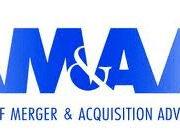CALCULATION OF VALUE: THE PRECURSOR TO AN EXIT
Business owners contemplating an exit from their business should begin the transaction process by engaging an experienced M&A Advisor to perform a Calculation of Value. Although the requirements for a calculation engagement may be more limited than for a valuation engagement, business owners should expect an efficient and systematic approach to the calculation of their company’s value. Most effectively used on the sell-side of a transaction, calculation engagements typically possess the following characteristics:
- Scope limitations; more narrowly-focused
- Reduction of costs (relative to a formal valuation)
- Mutually-agreed upon valuation approaches and methods
- Mutual determination of the extent of procedures to be performed
- Calculated Value expressed as a single value or value range
A thoroughly executed calculation of value will serve as the reference point for business owners and their respective M&A Advisor moving forward in the transaction process. Calculation engagements also provide business owners and their advisors with a platform to clarify the owners’ goals, align owners’ expectations with marketplace realities, determine whether a sale is the appropriate course of action, identify opportunities to maximize the sales value, and eliminate surprises during due diligence/close.






